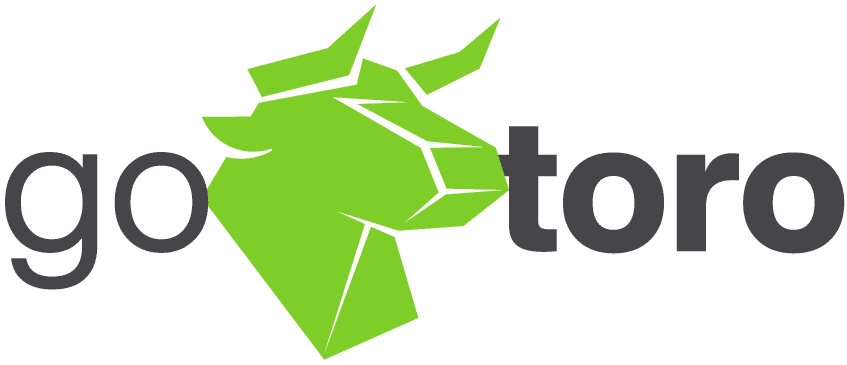Overview of the Growing Importance of Social Media Recruiting
Social media recruiting has become an essential tool for modern hiring practices. 79% of job applicants use social media in their job search (Glassdoor, 2023). As technology advances and social media platforms grow in popularity, companies are leveraging these networks to find and attract top talent. Social media recruiting offers a unique opportunity to reach a broader audience, engage with potential candidates, and streamline the hiring process. This approach is not only cost-effective but also allows for a more personalized and interactive recruitment experience.
How Social Media Platforms Have Transformed Traditional Hiring Practices

The advent of social media platforms has revolutionized traditional hiring practices. Traditional methods, such as job boards and print advertisements, are now supplemented or even replaced by dynamic social media strategies. 73% of millennials (18-34 age group) found their last position through a social media platform (CareerProfiles, 2020) Social media recruiting enables companies to showcase their culture, interact with candidates in real-time, and utilize advanced targeting to find the best fit for their roles. This transformation has led to more efficient and effective hiring processes, allowing companies to tap into a global talent pool and attract diverse candidates.
Advantages of Social Media Recruitment
Wider Reach
Social media recruiting provides access to a global talent pool beyond geographic limitations. Companies can reach candidates from different regions and backgrounds, increasing the diversity and quality of applicants. This wider reach ensures that job postings are seen by a larger audience, enhancing the chances of finding the perfect candidate.
Cost-Effective
One of the significant benefits of social media recruiting is its cost-effectiveness. Traditional advertising and recruitment methods can be expensive, but social media platforms offer affordable and scalable options. Companies can post job openings, create engaging content, and run targeted ads without breaking the bank, making social media recruiting an attractive option for businesses of all sizes.
Engagement
Social media recruiting allows for direct interaction with potential candidates and engagement with passive job seekers. Through comments, messages, and social media posts, companies can build relationships with candidates, answer their questions, and provide insights into the company culture. This level of engagement helps attract top talent and creates a positive impression of the company.
Popular Platforms for Social Media Recruiting
LinkedIn is ideal for professional networking, showcasing company culture, and posting job openings. 40 million people look for jobs on LinkedIn weekly (LinkedIn, 2020). As a platform dedicated to professional connections, LinkedIn allows companies to reach a highly targeted audience of job seekers and industry professionals. By utilizing LinkedIn’s advanced search and targeting features, companies can find and attract the best candidates for their roles.
Facebook is useful for community engagement and targeting specific demographic groups through ads. With its vast user base, Facebook offers an excellent opportunity for companies to connect with potential candidates. By creating engaging posts, running targeted ads, and participating in relevant groups, companies can effectively use Facebook for social media recruiting.
Twitter is great for quick updates, using hashtags to increase visibility, and engaging in industry conversations. The platform’s fast-paced nature allows companies to share job openings, industry news, and company updates in real-time. Using relevant hashtags, companies can ensure their job postings reach a broader audience and participate in conversations that attract potential candidates.
Instagram is a visual platform to highlight company culture, employee experiences, and behind-the-scenes content. By sharing photos and videos of the workplace, company events, and employee stories, companies can create a compelling employer brand. Instagram’s visual nature makes it an excellent tool for social media recruiting, helping companies attract candidates who resonate with their culture and values.
TikTok
TikTok is an emerging platform for reaching younger audiences with creative and engaging recruitment content. With its short-form video format, TikTok allows companies to showcase their culture, job openings, and employee testimonials in a fun and engaging way. This platform is particularly effective for attracting younger talent and creating a dynamic and innovative employer brand.
Creating an Effective Social Media Recruiting Strategy

Define Objectives
When creating an effective social media recruiting strategy, it is crucial to define clear objectives. Outline what you aim to achieve through social media recruiting, whether it is increasing the number of applications, building a strong employer brand, or engaging with passive candidates. Having well-defined objectives helps in measuring the success of your social media recruiting efforts and guides your strategy towards achieving specific goals. According to statistics, 75% of leading companies use recruiting videos to generate more candidates. In recruiting videos, you can use a broad range of content types, which makes them an effective recruitment tool (Moovly, 2024).
Target Audience
Identifying and understanding the demographics and interests of your ideal candidates is essential for effective social media recruiting. Determine the characteristics of your target audience, including their age, location, education, and professional background. Understanding their interests and online behaviors will help you tailor your social media content to resonate with potential candidates and attract the right talent.
Content Creation
Creating compelling content is a key component of a successful social media recruiting strategy. Develop content that showcases your company culture, highlights job opportunities, and features employee testimonials. Visual content, such as photos and videos, can be particularly effective in engaging potential candidates and giving them a glimpse into what it’s like to work at your company. Ensure that your content is authentic and aligns with your employer brand.
Consistent Posting
Maintaining a regular posting schedule is crucial to keep your audience engaged and informed. Consistent posting helps build a strong online presence and ensures that your job openings and company updates are seen by your target audience. Use a content calendar to plan your posts and maintain a balance between job-related content and engaging posts that highlight your company culture and values.
Leveraging Hashtags and Keywords for a Social Media Recruiting Strategy
Industry-Specific Hashtags
Using relevant industry-specific hashtags is an effective way to increase the visibility of your job postings among targeted audiences. Hashtags related to your industry, such as #TechJobs or #HealthcareCareers, can help your posts reach candidates who are actively looking for opportunities in your field. Research popular hashtags within your industry and incorporate them into your social media recruiting strategy.
Trending Hashtags
Incorporating popular and trending hashtags into your social media posts can help you reach a broader audience. Trending hashtags, such as #JobSearch or #NowHiring, can increase the visibility of your job postings and attract candidates who might not be actively following your company. Stay updated on trending hashtags and use them strategically to boost your social media recruiting efforts.
Keywords
Optimizing your job posts and company profiles with relevant keywords is essential for improving searchability. Identify keywords that potential candidates might use when searching for job opportunities, such as “social media recruiting,” “remote jobs,” or “tech careers.” Incorporate these keywords naturally into your job descriptions, social media profiles, and posts to enhance your visibility in search results and attract qualified candidates.
Engagement and Interaction in Social Media Recruiting
Respond Promptly
In social media recruiting, responding promptly to comments, messages, and inquiries is essential for building a positive reputation. Timely engagement shows that your company values potential candidates and is active in its recruitment efforts. Prompt responses can lead to increased interest in your job postings and a stronger employer brand. Make it a priority to monitor your social media channels regularly and engage with your audience to foster a positive and responsive online presence.
Community Involvement
Participating in industry groups, forums, and discussions is a powerful way to increase visibility and credibility in social media recruiting. By being active in relevant online communities, your company can showcase its expertise, share valuable insights, and connect with potential candidates. Engage in discussions, share industry news, and offer advice to build relationships and establish your company as a thought leader in your field. This involvement not only attracts talent but also enhances your overall brand reputation.
Employee Advocacy
Encouraging employees to share job postings and company content can significantly extend your reach and authenticity in social media recruiting. Employee advocacy leverages the networks of your existing staff, making your recruitment efforts more personal and credible. Employee referrals have the highest applicant-to-hire conversion rate. While only 7% of applicants come via employee referrals, they account for 40% of all new hire hires (Jobvite, 2024). Create a culture where employees feel motivated to share their positive experiences and job opportunities on their social media profiles. This organic promotion can attract high-quality candidates and reinforce your company’s reputation as a great place to work.
Tools and Analytics for Measuring Success in Social Media Recruiting

Social Media Analytics Tools
Utilizing social media analytics tools like Hootsuite, Buffer, and Sprout Social is crucial for tracking engagement and performance in social media recruiting. These tools provide valuable insights into how your posts are performing, allowing you to measure the effectiveness of your recruitment strategy. They offer features such as scheduling posts, monitoring mentions, and analyzing engagement metrics, helping you optimize your social media efforts and achieve better results.
Key Metrics
Monitoring key metrics is essential for evaluating the success of your social media recruiting strategy. Important metrics to track include engagement rates, click-through rates, application rates, and conversion rates. Engagement rates show how well your content resonates with your audience, while click-through rates indicate the effectiveness of your calls to action. Application rates measure how many potential candidates are applying through your social media posts, and conversion rates track the number of successful hires. Analyzing these metrics helps identify areas of improvement and ensures your recruitment efforts are on the right track.
Continuous Improvement
Using analytics data to refine and improve your social media recruiting strategy is a continuous process. Regularly reviewing performance metrics and feedback allows you to make informed decisions and adjust your approach. Identify what works well and what doesn’t, and experiment with different types of content, posting schedules, and engagement tactics. Continuous improvement ensures that your social media recruiting strategy remains effective and adapts to the evolving needs of your audience and the job market.
Challenges and Solutions in Social Media Recruiting
Maintaining Authenticity
In social media recruiting, maintaining authenticity is crucial to building trust with potential candidates. Ensure that the content you share genuinely reflects the true culture of your company. Highlight real employee stories, showcase actual events, and provide honest insights into what it’s like to work at your organization. Authentic content resonates more with candidates and helps in attracting individuals who align with your company’s values and culture.
Balancing Quantity and Quality
Balancing the quantity and quality of applications is a common challenge in social media recruiting. While it’s important to attract a high volume of applicants, ensuring the quality of candidates is equally crucial. To achieve this balance, create clear and detailed job postings that specify the qualifications and skills required. Use targeted advertising to reach the right audience and employ screening tools to filter applications effectively. This approach helps in maintaining a steady flow of qualified candidates without overwhelming your recruitment team.
Conclusion
Social media recruiting is a powerful tool that offers numerous benefits, including wider reach, cost-effectiveness, and enhanced engagement with potential candidates. Embracing social media as a vital part of modern recruitment can transform your hiring process and help you attract top talent. Request a demo from GoToro today to see how our innovative solutions can elevate your recruitment strategy and drive your hiring success.


